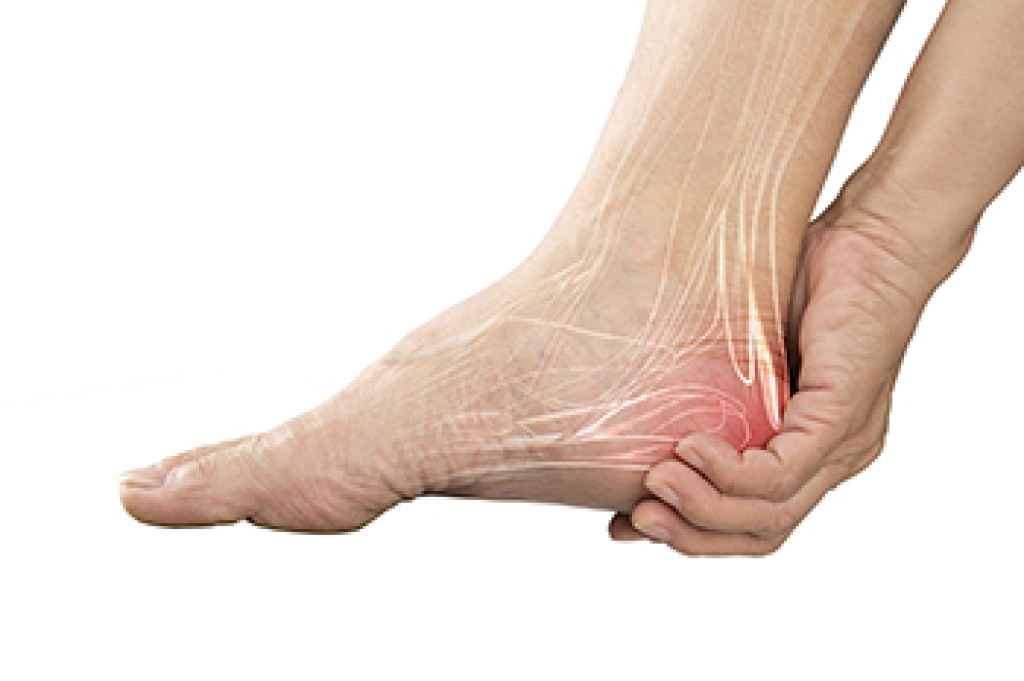Blog
Blog
Causes of Big Toe Joint Pain

Pain in the big toe joint can have many causes. It often happens when the bones, tendons, or soft tissues around the first metatarsophalangeal, or MTP, joint become strained or inflamed. Conditions like gout, arthritis, bunions, or sesamoiditis can make the MTP joint stiff, swollen, and painful when walking. Repeated stress from sports, tight shoes, or wearing high heels can also irritate this joint, causing turf toe, tendonitis, or bursitis. A fracture or sprain can result from a direct injury, like stubbing the toe or dropping something heavy on it. If left untreated, pain in the big toe joint can limit movement or cause deformity. A podiatrist can examine the foot, order X-rays, and determine the cause of pain to prevent further joint damage. Treatment can relieve pressure on the toe, improve alignment, or involve surgery if needed. If you have pain in the joint of your big toe, it is suggested that you make an appointment with a podiatrist for a diagnosis and treatment.
Toe pain can disrupt your daily activities. If you have any concerns, contact one of our doctors of Favor Foot Ankle Leg & Wound Center. Our doctors can provide the care you need to keep you pain-free and on your feet.
What Causes Toe Pain?
Most severe toe pain is caused due to a sports injury, trauma from dropping something heavy on the toe, or bumping into something rigid. Other problems can develop over time for various reasons.
Toe pain can be caused by one or more ailments. The most common include:
- Trauma
- Sports injury
- Wearing shoes that are too tight
- Arthritis
- Gout
- Corns and calluses
- Hammertoe
- Bunions
- Blisters
- Ingrown toenails
- Sprains
- Fractures (broken bones)
- Dislocations
When to See a Podiatrist
- Severe pain
- Persistent pain that lasts more than a week
- Signs of infection
- Continued swelling
- Pain that prevents walking
Diagnosis
In many cases the cause of toe pain is obvious, but in others, a podiatrist may want to use more advanced methods to determine the problem. These can range from simple visual inspections and sensation tests to X-rays and MRI scans. Prior medical history, family medical history, and any recent physical traumatic events will all be taken into consideration for a proper diagnosis.
Treatment
Treatments for toe pain and injuries vary and may include shoe inserts, padding, taping, medicines, injections, and in some cases, surgery. If you believe that you have broken a toe, please see a podiatrist as soon as possible.
If you have any questions please contact our office located in South Amboy, NJ . We offer the newest diagnostic and treatment technologies for all your foot and ankle needs.
Understanding Athlete’s Foot and How Professional Care Helps

Athlete’s foot is a common fungal infection that thrives in warm and moist environments such as locker rooms, sweaty footwear, and damp socks. It may appear as scaly, peeling, or cracked skin between the toes or along the soles, sometimes with small blisters or redness. Symptoms often include itching, burning, and stinging sensations that can become more intense after removing shoes. The skin may feel dry, irritated, or tender to the touch, and the infection can spread if left untreated. A podiatrist can provide an accurate diagnosis by examining the affected areas and identifying the specific type of fungus involved. Treatment may include prescription-strength antifungal medications, guidance on hygiene practices, and advice on footwear or moisture control. In more persistent cases, a podiatrist may use advanced therapies to target deeper infections and prevent recurrence. Prompt professional care supports faster healing and reduces the risk of spreading the condition. If you notice ongoing itching or skin changes on your feet, it is suggested that you make an appointment with a podiatrist.
Athlete’s foot is an inconvenient condition that can be easily reduced with the proper treatment. If you have any concerns about your feet and ankles, contact one of our doctors from Favor Foot Ankle Leg & Wound Center. Our doctors will treat your foot and ankle needs.
Athlete’s Foot: The Sole Story
Athlete's foot, also known as tinea pedis, can be an extremely contagious foot infection. It is commonly contracted in public changing areas and bathrooms, dormitory style living quarters, around locker rooms and public swimming pools, or anywhere your feet often come into contact with other people.
Solutions to Combat Athlete’s Foot
- Hydrate your feet by using lotion
- Exfoliate
- Buff off nails
- Use of anti-fungal products
- Examine your feet and visit your doctor if any suspicious blisters or cuts develop
Athlete’s foot can cause many irritating symptoms such as dry and flaking skin, itching, and redness. Some more severe symptoms can include bleeding and cracked skin, intense itching and burning, and even pain when walking. In the worst cases, Athlete’s foot can cause blistering as well. Speak to your podiatrist for a better understanding of the different causes of Athlete’s foot, as well as help in determining which treatment options are best for you.
If you have any questions please feel free to contact our office located in South Amboy, NJ . We offer the newest diagnostic and treatment technologies for all your foot and ankle needs.
Gout and Its Impact on Women

Gout is a type of arthritis caused by a buildup of uric acid crystals in the joints, leading to sudden pain, redness, and swelling, often in the big toe. While it is more common in men, gout in women typically appears after menopause when uric acid levels may rise. Risk factors include hypertension, diabetes mellitus, and renal dysfunction, all of which can affect how the body processes uric acid. Symptoms may come on suddenly and cause intense discomfort, stiffness, and warmth in the affected joint. A podiatrist can diagnose gout, manage pain, and recommend lifestyle changes or medications to prevent future flare-ups. If you have intense joint pain in your big toe, it is suggested that you promptly contact a podiatrist who can help you to manage this painful condition.
Gout is a foot condition that requires certain treatment and care. If you are seeking treatment, contact one of our doctors from Favor Foot Ankle Leg & Wound Center. Our doctors will treat your foot and ankle needs.
What Is Gout?
Gout is a type of arthritis caused by a buildup of uric acid in the bloodstream. It often develops in the foot, especially the big toe area, although it can manifest in other parts of the body as well. Gout can make walking and standing very painful and is especially common in diabetics and the obese.
People typically get gout because of a poor diet. Genetic predisposition is also a factor. The children of parents who have had gout frequently have a chance of developing it themselves.
Gout can easily be identified by redness and inflammation of the big toe and the surrounding areas of the foot. Other symptoms include extreme fatigue, joint pain, and running high fevers. Sometimes corticosteroid drugs can be prescribed to treat gout, but the best way to combat this disease is to get more exercise and eat a better diet.
If you have any questions, please feel free to contact our office located in South Amboy, NJ . We offer the newest diagnostic and treatment technologies for all your foot care needs.
Causes of Plantar Heel Pain and How to Find Relief

Plantar heel pain refers to discomfort at the bottom of the heel that can make standing or walking difficult. Common causes include plantar fasciitis and calcaneal spur syndrome, which is also known as a heel spur. This pain often develops gradually and may worsen with the first steps in the morning or after long periods of rest. Diagnosis involves a physical exam along with imaging such as X rays or CT scans to identify the underlying cause. A podiatrist can design a customized treatment plan that may include stretching exercises, custom orthotics, footwear recommendations, and advanced therapies for pain relief and healing. Heel pain can be debilitating, and may limit your mobility. If this applies to you, it is suggested that you consult a podiatrist who can provide expert advice and appropriate treatment solutions.
Many people suffer from bouts of heel pain. For more information, contact one of our doctors of Favor Foot Ankle Leg & Wound Center. Our doctors can provide the care you need to keep you pain-free and on your feet.
Causes of Heel Pain
Heel pain is often associated with plantar fasciitis. The plantar fascia is a band of tissues that extends along the bottom of the foot. A rip or tear in this ligament can cause inflammation of the tissue.
Achilles tendonitis is another cause of heel pain. Inflammation of the Achilles tendon will cause pain from fractures and muscle tearing. Lack of flexibility is also another symptom.
Heel spurs are another cause of pain. When the tissues of the plantar fascia undergo a great deal of stress, it can lead to ligament separation from the heel bone, causing heel spurs.
Why Might Heel Pain Occur?
- Wearing ill-fitting shoes
- Wearing non-supportive shoes
- Weight change
- Excessive running
Treatments
Heel pain should be treated as soon as possible for immediate results. Keeping your feet in a stress-free environment will help. If you suffer from Achilles tendonitis or plantar fasciitis, applying ice will reduce the swelling. Stretching before an exercise like running will help the muscles. Using all these tips will help make heel pain a condition of the past.
If you have any questions, please feel free to contact our office located in South Amboy, NJ . We offer the newest diagnostic and treatment technologies for all your foot care needs.
Blog Archives
- 2025
- 2024
- 2023
- 2022
- 2021

